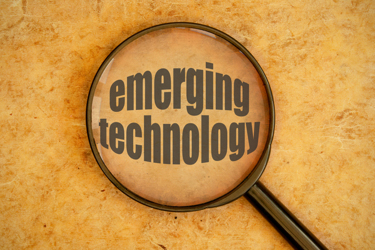Emerging Technologies In The Delivery Of Proteins & Peptides
By Dimitrios A. Lamprou, Queen’s University Belfast

Advances in drug design have led to the development of new drug molecules in the forms of peptides and proteins. However, the limited ability to selectively deliver these molecules at well-defined dosing regimens remains a significant challenge. Therefore, new materials and manufacturing techniques are emerging to meet the challenges associated with the formulation and delivery of biopharmaceuticals and pharmaceuticals.
Emerging technologies (e.g., 3D printing and bioprinting, electrospinning, and microfluidics) are aiming to prepare systems that can be used for personalized medicine, be adapted to patient’s needs, and teach old drugs new tricks.1,2 For example, proteins and peptides can be encapsulated into particles formulated by microfluidics or be delivered using a lab-on-a-chip approach or in combination with microelectromechanical systems (MEMS and biological MEMS). Biologic molecules can be encapsulated in nanofibers by electrospinning and used for drug delivery and other biomedical applications (e.g., wound dressing and tissue engineering). Peptide formulations can be combined with additive manufacturing (AM) techniques to effectively deliver biologics or to manufacture microneedles for the delivery of vaccines.

Additive Manufacturing (3D Printing & Bioprinting)
AM is a promising set of technologies for producing drug delivery systems and medical implants. 3D printing (3DP) has been widely explored for manufacturing dosage forms and drug delivery systems, such as drug-eluting implants and wound healing applications. The main advantage of AM is the ability to prepare systems of a variety of shapes and sizes and to use FDA approved polymers (synthetic and natural). The primary AM technologies that have the potential to be used for the delivery of proteins or peptides are stereolithography (SLA), digital light processing (DLP), inkjet-based 3DP, pressure-assisted microsyringe (PAM) printing, and bioprinting.3 Great progress has been made in the development of long-acting biologics for local or targeted therapeutics. For example, microneedles can be prepared by SLA to deliver proteins and peptides through the skin, avoiding issues associated with the gastrointestinal tract. 3DP can also be used to manufacture patient-matched devices specific to their anatomy, such as, for example, implants for cancer treatment that are loaded with biologically active molecules, using data obtained by nuclear magnetic resonance (NMR) imaging or computer tomography (CT). Moreover, antioxidant and anti-infective agents can be incorporated within 3DP-personalized systems. In addition, bioprinting has the potential to build objects using bio-inks that can contain cells or other biologic molecules that are incorporated into natural polymers.
Electrohydrodynamic Processes (Electrospinning & Electrospraying)
Electrospinning and electrospraying are techniques that utilize electric forces to create nano- and microfibers or microparticles. The process involves applying electric charges across a metallic needle that contains a polymeric solution.4 The type of drugs being studied range from antibiotics to steroids. Medical implants have also been manufactured using electrohydrodynamic (EHD) processes, since they can be implanted at the required tissue site, providing sustained release with low toxicity and reducing the chance of unwanted reactions with irrelevant organs or tissues. EHD processes have been used for the delivery of peptides and proteins using a variety of dosage forms such as oral films and vaginal meshes and for wound dressing applications. EHD processes have also been used for the encapsulation of antibodies, enzymes, growth factors, hormones, nucleic acids, stem cells, and vaccine antigens.
Microfluidics & Nanofluidics
Microfluidics (MFs) is a fluid technique that allows handling of fluids on a small scale using channels, chambers, fluid paths, and other features. It uses small volumes of liquids and allows the control of fluid transport and the mixing of molecules to manufacture delivery systems such as poly lactic-co-glycolic acid (PLGA) or liposomes loaded with biologic molecules.5 The MFs and nanofluidics (NFs) market includes drug delivery and in-vitro diagnostics, among many other applications. MFs also have the potential to be used in the fight against a pandemic in manufacturing of vaccines or rapid diagnosis, as they can deliver cells or biologics. They can greatly improve the efficacy of biologics by encapsulating them to protect them from harsh environments, thus increasing their stability. Over 90 vaccines are under development for COVID-19 across the world, and without lipid nanoparticles that can easily be prepared using microfluidics techniques, there would be no way to deliver the mRNA; therefore, there would be no successful vaccines for COVID-19. The MF lab-on-a-chip approach can be used to detect viruses and to test new drugs without using animals. Moreover, the technique is energetically economical, convenient, cheaper, and faster than traditional formulation methods, and molecules that have not been encapsulated into the particles can be reused, providing a sustainable and continuous manufacturing process.
Microelectromechanical Systems (MEMS & BioMEMS)
Microelectromechanical systems (MEMS and BioMEMS) allow the development of innovative devices for a variety of applications, including drug delivery. Using MEMS and BioMEMS as point-of-care (PoC) diagnostic devices and drug/protein delivery devices, in combination with 3D printed (e.g., microneedles) or MF systems, provides new opportunities for the delivery of biologics and non-invasive continuous diagnosis and monitoring of diseases.1 MEMS drug delivery devices can be manufactured with various nano- and microstructures, such as reservoirs, pumps, valves, and needles, as implantable, reservoir-based, or transdermal-based devices.
Conclusions
Advances in biotechnology have produced an increasing number of biopharmaceuticals. However, the successful delivery of these molecules is a major challenge, so researchers are developing a number of new delivery technologies and materials. By using emerging technologies, researchers can produce easier and faster systems that are safer and have better properties than existing ones. Moreover, personalized delivery systems (e.g., nanomedicines) or medical implants are also achievable with these technologies. These novel methods of protein and peptide drug delivery systems have a promising future supporting therapeutics, and future innovations using emerging technologies may hold the key for the development of biologics with optimal clinical properties.
References
- D.A. Lamprou. (2020) Emerging technologies for diagnostics and drug delivery in the fight against COVID-19 and other pandemics. Expert Rev. Med. Devices. 17(10), 1007-1012.
- D.A. Lamprou, T.R.R. Singh, E. Larrañeta, R. Donnelly. (2019) How innovative drug delivery devices can help realise clinical utility of new effective therapies. Expert Opin. Drug Deliv. 16(12), 1277-1281.
- E. Mathew, G. Pitzanti, E. Larrañeta, D.A. Lamprou. (2020) 3D Printing of Pharmaceuticals and Drug Delivery Devices. Pharmaceutics. 12(3), 266.
- R. Zelkó, D.A. Lamprou, I. Sebe (2020) Recent Development of Electrospinning for Drug Delivery. Pharmaceutics. 12(1), 5.
- E. Weaver, S. Uddin, D.K. Cole, A. Hooker, D.A. Lamprou. (2021) The Present and Future Role of Microfluidics for Protein and Peptide-Based Therapeutics and Diagnostics. Applied Sciences. 11(9), 4109.
About The Author:
 Dimitrios Lamprou (Ph.D., MBA) is a Reader in pharmaceutical engineering at Queen’s University Belfast and is a subject matter expert in emerging technologies for drug delivery and medical implants. He is the author of over 100 peer-reviewed publications and of over 250 conference abstracts and has given over 100 oral invited talks in institutions and conferences across the world. You can reach him at www.EmergingTechnologiesLab.com.
Dimitrios Lamprou (Ph.D., MBA) is a Reader in pharmaceutical engineering at Queen’s University Belfast and is a subject matter expert in emerging technologies for drug delivery and medical implants. He is the author of over 100 peer-reviewed publications and of over 250 conference abstracts and has given over 100 oral invited talks in institutions and conferences across the world. You can reach him at www.EmergingTechnologiesLab.com.
